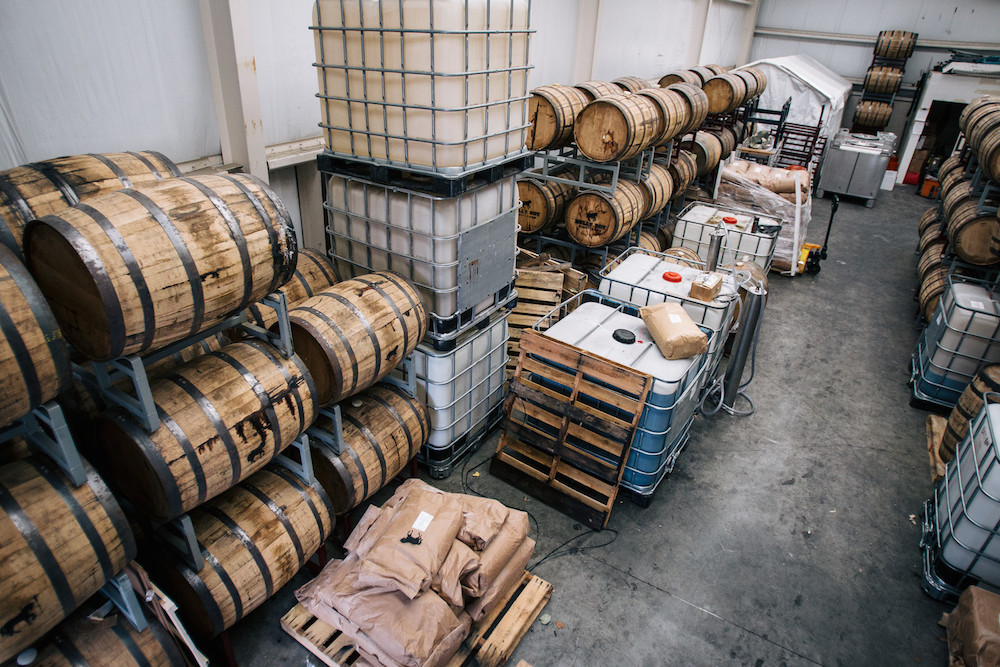American craft spirits appear to be in boom time. But can the trend continue?
Sales in the U.S. grew 4.1% last year, as volume increased 2.3%. Products in the $20-$30 range were up 7.1% in volume during 2015, while the $30-and-above category expanded by 6.5%.
Consumers are trading up, buying more, and exploring through styles. But all is not necessarily rosy. Just as the recent rapid growth of craft beer threatens to oversaturate that market, American spirits could be approaching a bubble of their own.
The number of U.S. distilleries a decade ago was about 50. Today, it’s well over 1,300. This owes to a low barrier of entry, plus broader consumer experimentation. But is there really enough demand among drinkers?
“Craft beer drinkers will buy a different six-pack every week. But it might take three weeks for someone to go through a whole bottle of craft gin,” says Dave Willis, co-founder and head distiller at Bully Boy Distillers, a craft distillery that opened in Boston in 2010 (pictured atop). “It’s a much slower burn. The volume just isn’t there to support all these craft distilleries.”
And, he adds, spirits drinkers typically do not have the same level of “promiscuity” as their beer peers. Whereas someone who enjoys craft brews will drink IPAs, stouts, sours, goses, ciders and even malt beverages, a vodka drinker tends to stick with vodka. The same goes for whiskey, rum, tequila, etc.
All of which begs the question: can American craft spirits continue to expand at such a high rate?
“I’m seeing much more of a boom-or-bust quality to new craft distilleries,” Willis reports. “It’s difficult not to look at what happened to craft beer in the ‘90s and feel like that’s coming down the pipe. It worries me. I think we could see a pullback.”
So which brands and categories could best survive a decline — and why?

Go Big or Go Local
There seem to be two prevailing opinions about how a craft distillery can survive long-term in America.
The first strategy is all about size. The goal is to create a huge, lasting, international brand. These distilleries will focus on a few core products that can really take off, explains Death’s Door Distillery CEO Brian Ellison, rather than a diverse line of spirits.
Headquartered in Middleton, WI, Death’s Door offers a few niche products: white whiskey, local-wheat vodka and Wondermint Schnapps Liqueur. But its global gin brand is what pays the bills. “We focus on the gin and the wheat,” Ellison says. “We focus on the larger brand with a story to tell.”
The strategy worked. Made from juniper berries and wheat farmed from Washington Island — a 23.5-square-mile island at Wisconsin’s northeastern tip — Death’s Door Gin has a worldwide following. It’s a staple of back bars and the gin sections in retail stores. It also helped revive farming on Washington Island in 2005, after three decades of little activity.
How motivated is Death’s Door by the bigger picture? The distillery has a tasting room, and rather than fill it with thirsty tourists, Ellison eventually moved whiskey barrels into the space for aging. Long-term, this is more profitable, he says.
The other strategy for modern distilleries to succeed is through regional strength. Bully Boy Distillers reflects this, relying on its Boston location and surrounding areas.
“Having a stronghold in regional markets is important,” Willis says. “That’s something distilleries can always fall back on. We’re in three states, but the bulk of our business is done in our home state of Massachusetts.”
“A lot of distilleries are in 15 or more states, but they don’t have a foothold in any of those,” he adds.
Another advantage with the regional focus is nimbleness. Small-batch producers have more leeway to experiment and innovate, testing out what their local, loyal fans like best, and can create larger, more-diverse product lineups.
Nevertheless, Willis believes that scaling up remains critical for distilleries to survive. Bully Boy is in the process of moving into a new distillery and will upgrade from a 150-million-gallon still to one with a 750-million capacity.
“The distilleries that are succeeding are trying to take it to the next level,” Willis says. “Those that have scaled up and have the money for sales and marketing will have the advantage.”

Is Gin For Real?
Whiskey is unlikely to significantly decline anytime soon. The recent revival of the brown spirit seems to have reestablished it as a staple drink, especially among Millennials. But what about other spirits?
Craft rum and vodka are still struggling to gain larger followings among consumers. Premium gin, however, has distillers much more enthusiastic about the future.
“We think gin is part of a bigger movement among consumers,” says Morgan Robbat, VP of Marketing for Anchor Distilling Company. “To us, it’s not a gin bubble. We think this is a shift in consumer taste and behavior.”

Robbat recalls when Anchor first launched Junípero Gin in 1996. The company was worried because little else existed then in the $30-and-up gin market. Most competitors were priced around $20. But Anchor believed Junípero was worth the extra $10, and went with the super-premium price.
The decision paid off, and proved well ahead of its time. Today, gins in the $30-$40 range are growing the fastest within the category, Robbat points out.
Ellison draw parallels between premium gin and what has fueled the rise of craft beer. “There’s also a lot of creativity and variety of styles in gin right now,” he explains. “That leads to a lot of consumer experimentation. I think people have become gin-curious. The category isn’t scary anymore. It’s become approachable.”
He says that he expects his own customers to try a lot of competitors’ gins, but believes that they’ll return to Death’s Door as a personal preference.
Willis echoes the sentiment that “premium gin feels real,” thanks to customer excitement about trying different brands and styles.










